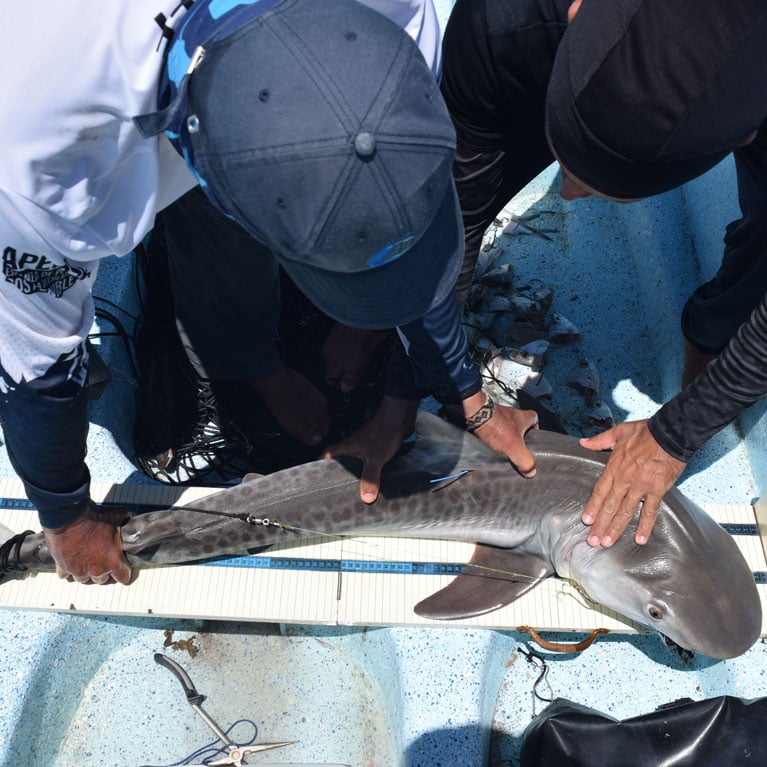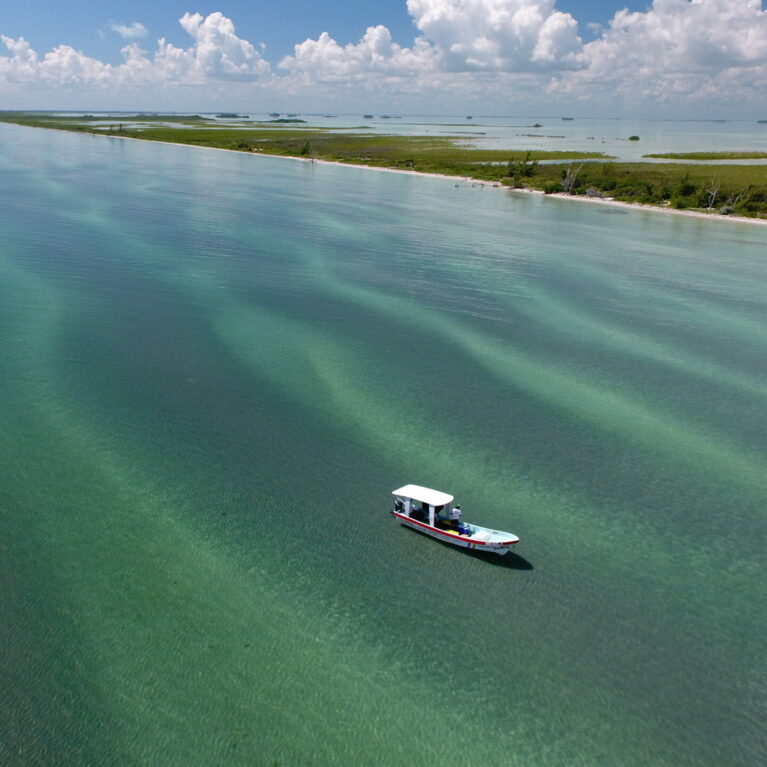Finding Mexico’s critical shark nurseries
Ramón is combining modern (environmental DNA, BRUVs and UAVs) and traditional methods to search for sharks and rays in two coastal nursery areas in Mexico. He wants to find essential shark areas on the Mexican Caribbean coast that can feed into the IUCN’s Important Shark and Rays Areas (ISRAs) process, putting key habitats on the map with the information needed to protect them. To do so, he’s reconstructing the past use of these coastal nurseries and comparing how sharks are using them now. Then he can see what’s changed, and decipher why that could be vital information to champion the restoration of Mexico’s shark nurseries.
I am an internationally recognised elasmobranch researcher with more than 35 years of experience in the conservation, fisheries management, biology and ecology of this fantastic group of fish. My background includes an MSc from University of Bangor, UK, and a PhD from the University of British Columbia, Canada. I have worked at the National Fisheries Institute (Mexico), Far Seas Fisheries Research Institute of Japan, the FAO (Rome, Italy), PERSGA (Red Sea), the Wildlife Conservation Society, MARVIVA (Eastern Tropical Pacific) and two federal universities in Brazil. I am a founding member of...



Future ISRAs: Evaluation of Shark & Ray Nurseries in the Mexican Caribbean
I want to find out if any – and which – species of sharks and rays still use each of two coastal areas as nursery grounds and compare this information with historical records. This will allow us to identify potential impacts and ways to restore the ecological function of these areas as shark nurseries.
Sharks and rays have been fished for many decades in Mexico and there are indications that some species might already be overexploited. However, very little research has been done on shark and ray nurseries in Mexico. Identifying their nurseries is urgent: it is the first and basic step that will enable us to define which habitats and areas are important in their life cycles, so that we can ask managers to take this into consideration.
Sharks and rays are among the most threatened animals worldwide: more than a third of them face extinction and this is worse in tropical areas, where 75% of them are threatened. Overfishing and habitat destruction, especially in coastal areas, are the main causes of their decline. Lagoons, bays and estuaries are key habitats for many shark and ray species because this is where the newborn spend months or years sheltered from predators and enjoying abundant food. In Mexico, sharks and rays have been exploited for a long time. Fisheries targeting them expanded greatly about 50 years ago, but have been showing signs of decline in recent decades – a possible indication of overfishing. Unfortunately, research on shark nurseries in Mexico has been limited. Meanwhile, recent interviews with fishers suggest that shark nurseries around the Yucatan peninsula have greatly deteriorated over the past 50 years. Research into shark nurseries in Mexico and their apparent deterioration is urgent so that these nurseries can be restored to their ecological function and help the recovery of shark populations. Recently, Important Shark and Ray Areas (ISRAs) have been highlighted as a powerful tool to help decision-makers visualise the relevance and fragility of specific areas to sharks and rays. However, ISRAs require input information that does not always exist, especially in non-developed regions. Our study aims to fill an important information gap by expanding our knowledge of shark nurseries in Mexico, assessing the impacts they have suffered over time and proposing solutions. We will use modern science (eDNA, BRUVs, UAVs) and traditional methods to detect sharks and rays in two coastal areas. We will also reconstruct the past use of these water bodies by sharks so that we can measure the level of impact on these important habitats, identify potential reasons and propose recovery measures.
Our main aim is to identify areas of special importance for the conservation of sharks and rays along the Caribbean coast of Mexico to feed information into the ISRAs process in the short-term. For this, we plan to
- Reconstruct which sharks and rays used the two coastal areas as nursery grounds in the past, in which seasons and for how long, and the particular sites where they lived.
- Research which sharks and rays use both areas in the present as nursery grounds, and the details of how they use them. By comparing the situations in the past and the present, we will evaluate the impacts that might have taken place and will also try to identify the main reasons for the potential negative change in the utilisation of these areas by sharks and rays.
- Use all this information to suggest to managers and decision-makers ways in which these nurseries can be brought back to their original state.
- Share our results in order to gain support for the restoration of shark and ray nurseries in the region.

